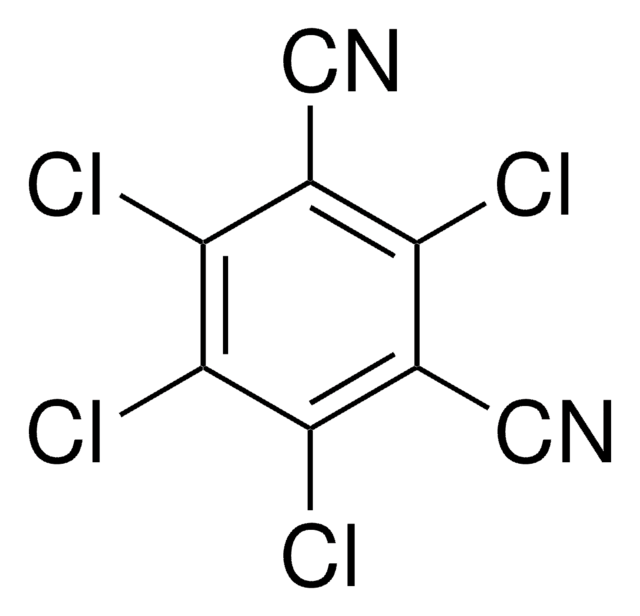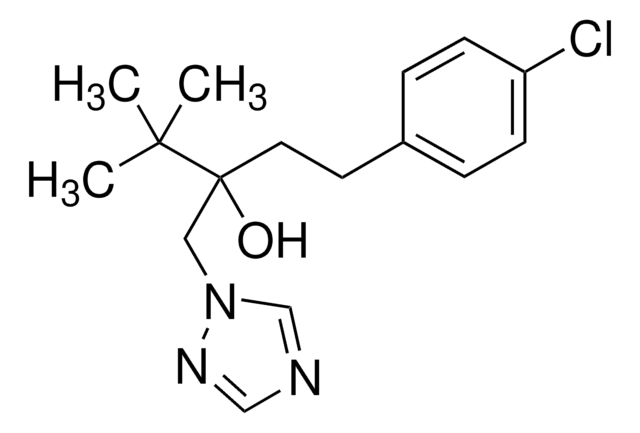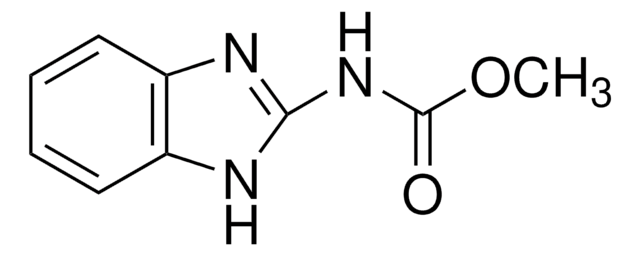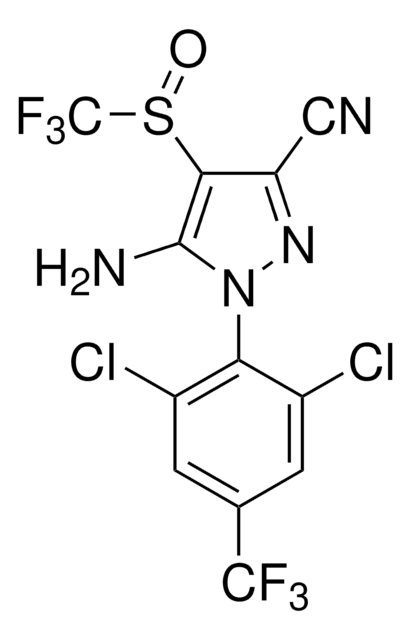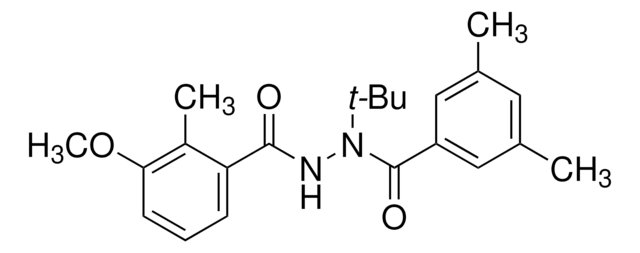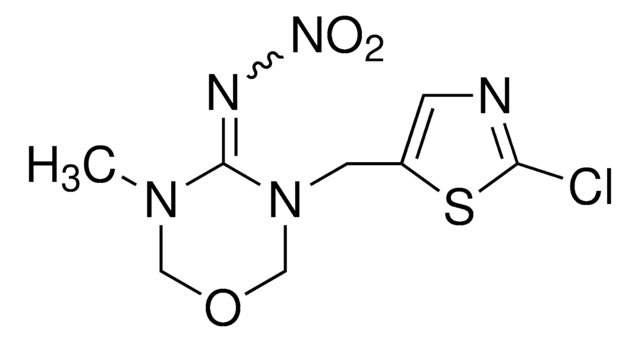N11454
Chlorothalonil
analytical standard
Sinonimo/i:
Tetrachloroisophthalodinitrile
About This Item
Prodotti consigliati
Grado
analytical standard
Confezionamento
ampule of 250 mg
Produttore/marchio commerciale
Chem Service, Inc. PS-1020
tecniche
HPLC: suitable
gas chromatography (GC): suitable
applicazioni
cleaning products
cosmetics
food and beverages
personal care
Formato
neat
Stringa SMILE
Clc1c(Cl)c(C#N)c(Cl)c(C#N)c1Cl
InChI
1S/C8Cl4N2/c9-5-3(1-13)6(10)8(12)7(11)4(5)2-14
CRQQGFGUEAVUIL-UHFFFAOYSA-N
Cerchi prodotti simili? Visita Guida al confronto tra prodotti
Applicazioni
Avvertenze
Danger
Indicazioni di pericolo
Consigli di prudenza
Classi di pericolo
Acute Tox. 2 Inhalation - Aquatic Acute 1 - Aquatic Chronic 1 - Carc. 2 - Eye Dam. 1 - Skin Sens. 1 - STOT SE 3
Organi bersaglio
Respiratory system
Codice della classe di stoccaggio
6.1A - Combustible acute toxic Cat. 1 and 2 / very toxic hazardous materials
Classe di pericolosità dell'acqua (WGK)
WGK 3
Punto d’infiammabilità (°F)
Not applicable
Punto d’infiammabilità (°C)
Not applicable
Scegli una delle versioni più recenti:
Certificati d'analisi (COA)
Ci dispiace, ma al momento non ci sono COA disponibili online per questo prodotto.
Se ti serve aiuto, non esitare a contattarci Servizio Clienti
Possiedi già questo prodotto?
I documenti relativi ai prodotti acquistati recentemente sono disponibili nell’Archivio dei documenti.
Articoli
GC Analysis of Agricultural Pesticides (Standard) on SLB®-5ms
Il team dei nostri ricercatori vanta grande esperienza in tutte le aree della ricerca quali Life Science, scienza dei materiali, sintesi chimica, cromatografia, discipline analitiche, ecc..
Contatta l'Assistenza Tecnica.